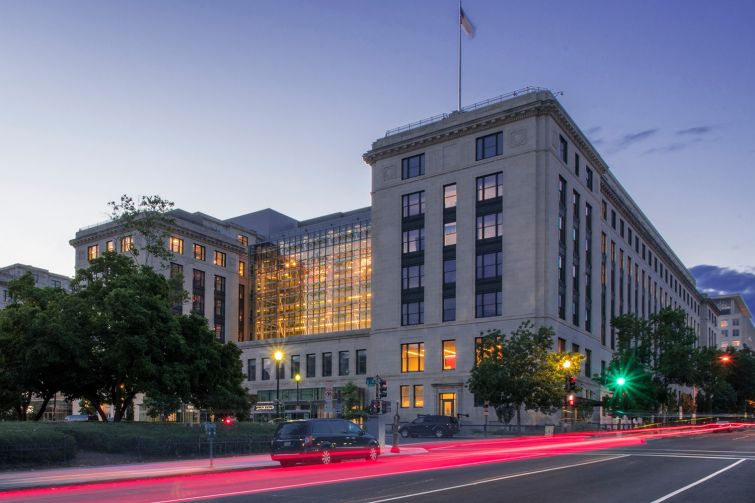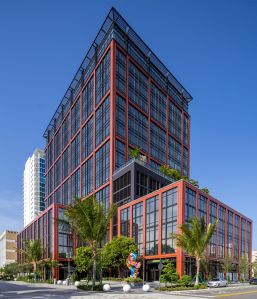Feds to Vacate Historic D.C. Building in Bid to Reduce Real Estate Footprint
The 141,000-SF property, built as a temporary structure during WWI, overlooks Washington’s Tidal Basin
By Jacob Gardenswartz April 30, 2024 5:49 pm
reprints
For over 100 years, the historic Liberty Loan Building has served as a landmark along the Tidal Basin in Washington, D.C. Built as a temporary wartime structure during World War 1, the “tempo”-style space has been home to various bond- and loan-related offices housed under the Department of the Treasury.
But on Monday, the federal General Services Administration (GSA) announced plans to dispose of the space and vacate its premises as part of a broader push to trim the amount and size of federal government-owned buildings throughout the nation.
“Moving underutilized and underperforming assets out of the building portfolio allows us to tailor a smaller federal footprint with better buildings — modernized and optimized for federal agency missions,” Melanie Gilbert, GSA’s acting administrator and regional commissioner for the capital region, said in a statement.
The Treasury Department’s Bureau of the Fiscal Service, currently housed in the Liberty Loan Building at 401 14th Street SW, will relocate downtown to the U.S. Mint headquarters sometime next spring, GSA said. By vacating the 141,000-square-foot property, the government is poised to save roughly $15 million in reinvestment costs, officials estimated.
The historic Liberty Loan complex overlooks the Jefferson Memorial and Washington Monument, and exists as the city’s last surviving WWI temporary building. Though it was renovated multiple times over the past 100 years, most recently in 1987, it has “outlived its useful life,” GSA said.
No plans have yet been announced for the space’s redevelopment, though GSA officials noted their move would enable “the community and local officials to pursue meaningful, continued use of this high-profile real estate.” The nearby Portals I office building was purchased by London-based private equity firm Henderson Park for $26 million last year, and Henderson recently announced a partnership with Los Angeles-based developer Lowe to convert the 526,000-square-foot development into 421 residential units and 69,000 square feet of retail space.
The Liberty Loan Building announcement comes amid the federal government’s decades-long push to decrease its real estate footprint, an effort catalyzed by the COVID-19 pandemic and the transition to remote work it brought about.
President Joe Biden, for his part, proposed the appropriation of $425 million in his fiscal year 2025 budget for a real estate optimization program, to allow GSA to “reconfigure and renovate federal buildings to better utilize space and to expedite the disposition of unneeded federal facilities,” per an agency release.
Last year, GSA announced plans to dispose of 23 properties in its portfolio, including the Department of Homeland Security’s former headquarters in Northwest D.C. and a 19th century schoolhouse downtown that’s been vacant since the 1980s. The agency is also involved in the impending relocation of the FBI headquarters from Pennsylvania Avenue in D.C. to Greenbelt, Md., a plan that’s prompted major disputes between lawmakers and local officials.
A study released last month by the congressionally established Public Buildings Reform Board found federal agencies in D.C. use an average of just 12 percent of their office space, and 24 agency headquarters examined in the study only utilize about a quarter of their space more broadly. GSA Administrator Robin Carnahan recently penned an op-ed urging Congress to give her agency greater discretion over how it uses GSA’s Federal Buildings Fund to enable building maintenance, renovations and other repairs to facilitate better utilization.
As of September of last year, the federal government owned 511 million square feet of office space, of which GSA oversees roughly 70 percent. The agency said it has cut approximately 12 million owned square feet and reduced 14 million leased square feet since 2013.


